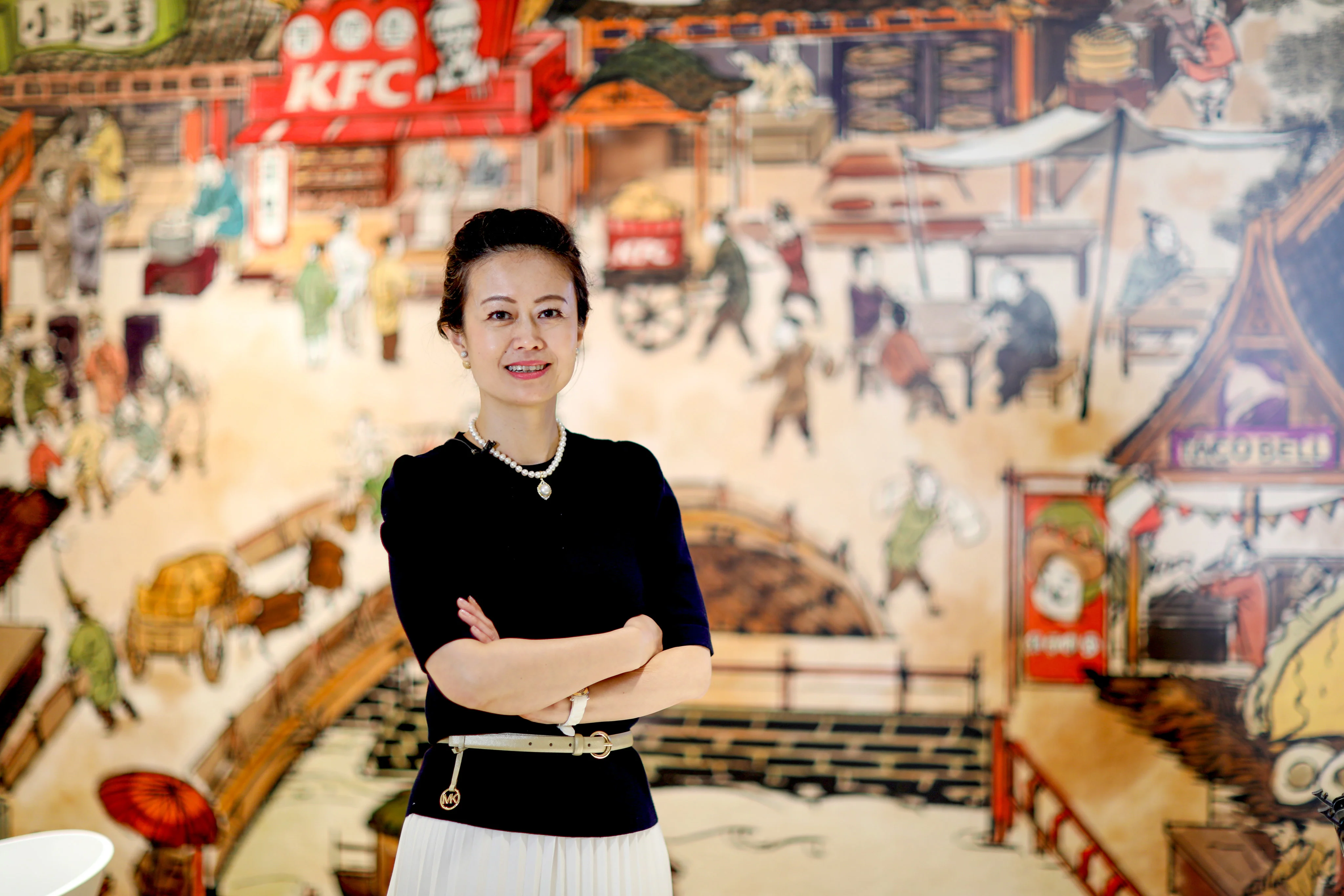By Daniel Ren
Yum China Holdings, the operator of KFC and Pizza Hut restaurants in mainland China, will further embrace artificial intelligence (AI) to improve operating efficiency and profitability and allow its store managers to focus on customer service.
The firm, which introduced its Q-Smart AI-powered assistant in June, was expected to help reduce waste, improve quality and save labour costs, chief technology officer (CTO) Leila Zhang said in an interview. The AI-powered system could help with staff scheduling, inventory replenishment and meal preparation, she added.
“When we think about AI and robotics, one of our primary considerations is to empower our restaurant managers,” she said. “We develop systems and AI-powered digital tools to allow them to work more efficiently, freeing up more of their time so they can focus on delivering exceptional customer service.”
Yum’s Q-Smart management system was able to monitor sales data, adjust preparation plans, and remind staff to confirm orders, Zhang said, a move in line with its past pioneering efforts. Yum China was the first mainland fast-food chain to adopt digital payment systems in 2015.
Digital ordering accounted for about 90 per cent of its total sales last year, helped by a loyalty membership programme that had 540 million consumers in mainland China as of March 31. It opened 247 net new stores in the first quarter this year, bringing the total to 16,642 nationwide.
Yum China reported a 1 per cent increase in sales to US$2.98 billion in the first quarter from a year earlier, while adjusted net income rose 1.7 per cent to US$292 million. Annual sales in 2024 of US$11.3 billion were the highest since at least 2016.
Zhang said Yum China’s accelerated digitalisation pace resulted from a surging popularity of e-commerce in the world’s biggest consumer market. In 2024, goods worth 15.5 trillion yuan (US$2.2 trillion) were transacted online, up 7.2 per cent from a year earlier, according to government data. It represented almost 27 per cent of retail sales nationwide.
The “go-digital” drive, which adopts the latest technologies to facilitate ordering, payment and delivery services, has been a priority among consumer-focused businesses as they vie for a bigger market share as consumers spend more via online channels.
Digital forces would help restructure the value chains on the mainland, with more dynamic firms emerging and strengthening the global competitiveness of the economy, according to a McKinsey report.
Zhang said that inventory life-cycle management could be enhanced with Yum China’s upgraded AI-powered management system, which aims at enhancing supply-chain flexibility by integrating information flows and cross-functional responsibilities across suppliers, logistics and stores.
“Yum China’s indigenous digitalised management system benefits the company in quickly sniffing out new business opportunities,” said Chen Xiao, CEO of Shanghai Yacheng Culture, a provider of marketing and branding services to multinational food companies. That way, “it can adapt to new market trends in a more flexible manner”, he added.
Other fast-food giants are also allocating more resources to digital systems to expand. Yum Brands, Yum China’s former parent, announced a partnership with Nvidia in March to improve customer ordering and operational efficiency.
McDonald’s China experimented with AI this year, introducing incentives for app-based interactions with its chatbot and collaborating with Chinese electric-vehicle maker Nio to enable in-car ordering.
The rapid development of large language models and the new chips that power them is expected to help Yum China enhance data and knowledge integration.
“We have consistently been at the forefront of digital adoption, and we want to maintain our leading position with the creation of our own digital ecosystem,” Zhang said.
